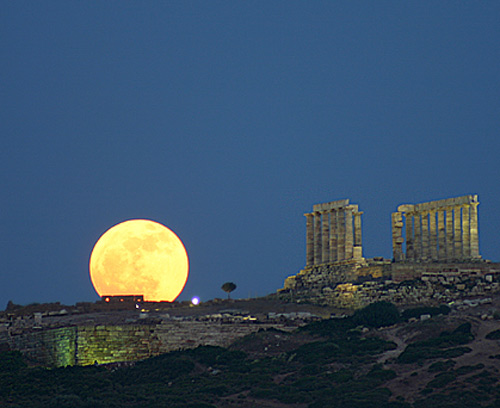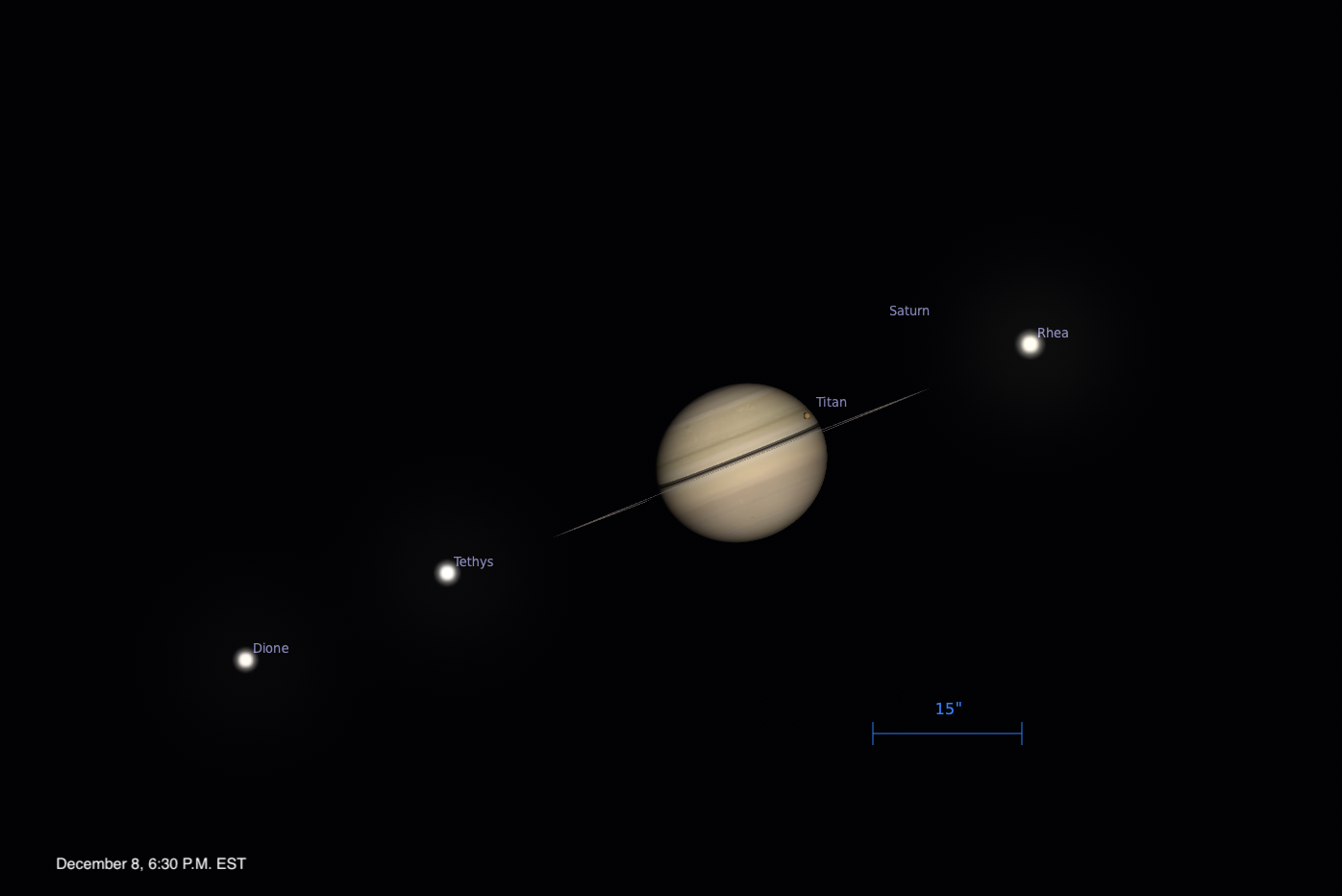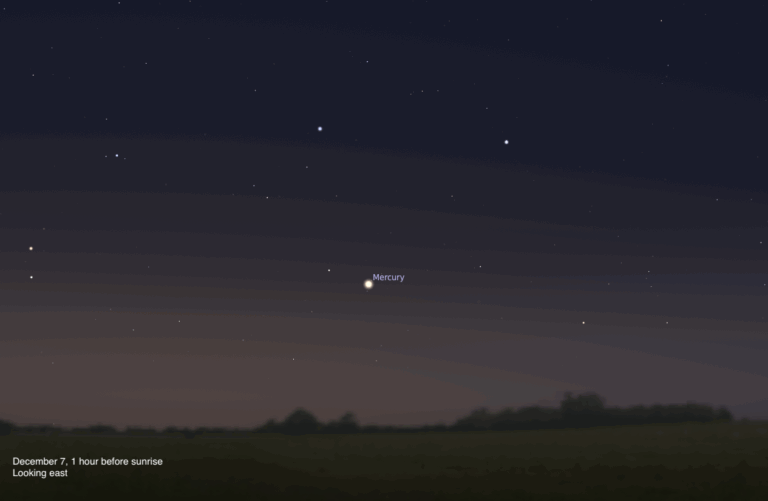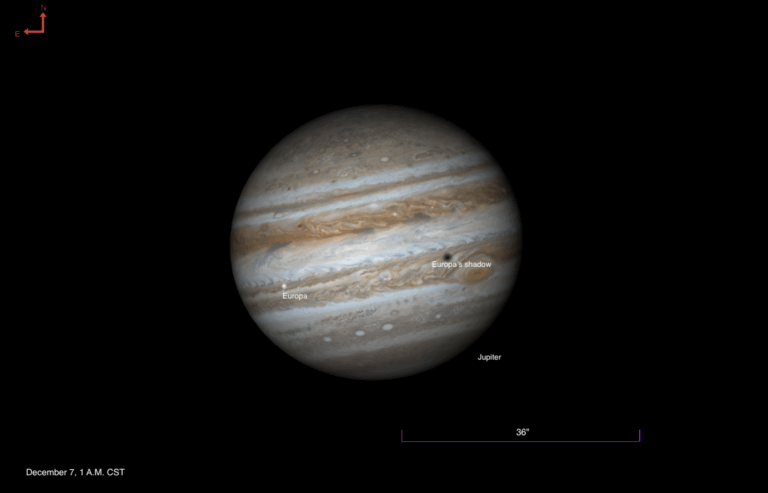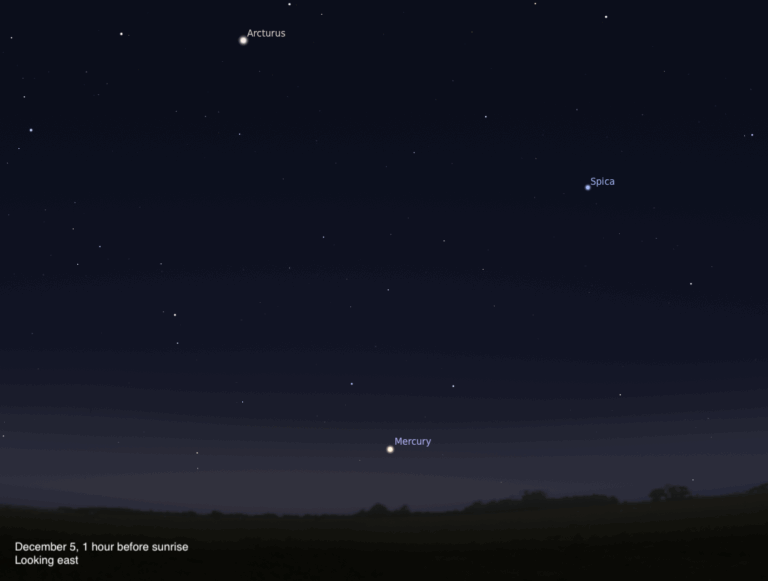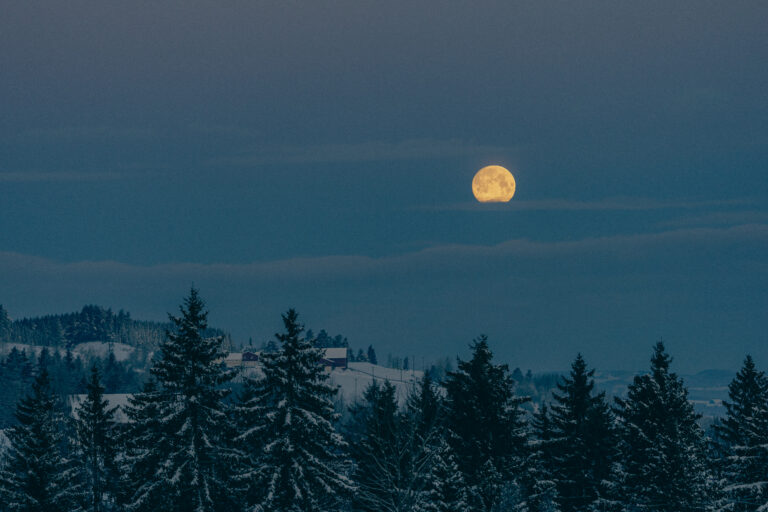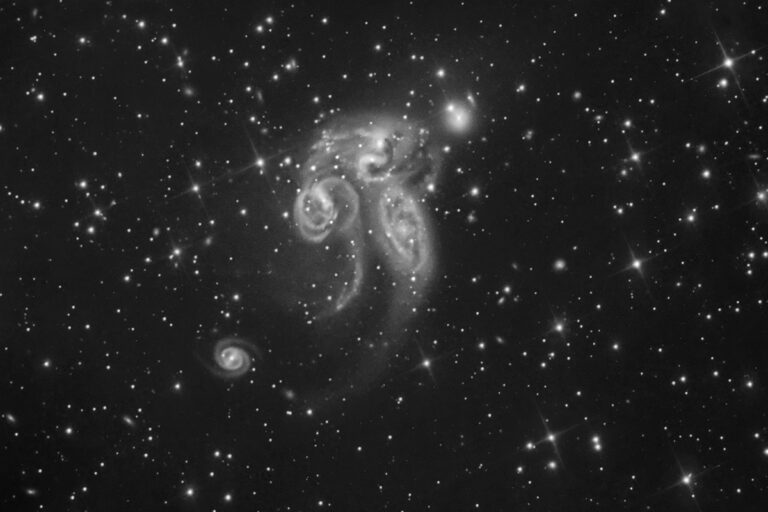Key Takeaways:
- Earth's orbit defines the ecliptic, a line on the celestial sphere inclined 23.5° to the celestial equator, reflecting Earth's axial tilt. The Moon's orbit is inclined 5.1° to the ecliptic.
- The Moon's orbital nodes, where its orbit intersects the ecliptic, precess with an 18.6-year period (the Saros cycle), influencing the occurrence of eclipses.
- The Moon's 5.1° orbital tilt relative to the ecliptic causes its apparent position in the sky to vary, reaching maximum northern and southern declinations.
- The Moon's rising and setting points shift over an approximate monthly cycle, influenced by the 18.6-year nodal precession, reaching extremes during Major Lunar Standstills when the nodes align with the solstices.
The Moon follows generally the same path, but with some important differences. The Moon’s orbit is tilted 5.1° relative to the ecliptic. So, the Moon can appear anywhere in a band extending 5.1° north (above) and south (below) of the ecliptic.
Each month, the Moon twice crosses the ecliptic on opposite sides of Earth. These intersections are called the nodes of the Moon’s orbit.
The nodal points also wander along the ecliptic. An imaginary line connecting the nodes through Earth’s center rotates around the planet every 18.6 years. When the Moon lies on a node, Earth, the Sun, and the Moon lie in the same plane. Rarely do the nodes line up exactly, but when they do — and if the Moon happens to be at new or full phase — total solar or lunar eclipses occur. However, due to the 5.1° tilt, eclipses do not occur every month. The 18.6-year period is called the Saros cycle, and it is used to help determine the periodic repetition of eclipses.
One result of the Moon’s orbital tilt is that when the Moon’s orbit is oriented such that it passes farthest north of the ecliptic in Gemini — which is the northernmost point of the ecliptic — the Moon stands much higher in the sky than usual. At the opposite side of the sky during the same lunar cycle — roughly 29.5 days — the Moon lies farthest south of the ecliptic; on these occasions, the Moon appears lowest in our sky. Such extremes are reflected also in the Moon’s rising and setting points, which then occur farther north and south than usual.
The Moon’s rising and setting points wander back and forth between the extremes, but not over an annual cycle like the Sun. Instead, the Moon performs this cycle every month (overlaid on a slow 18.6-year cycle as well), and with a swing relative to the Sun that can reach plus or minus 5.1°. When the line of nodes aligns with the solstices, the tilt of the Moon’s orbit causes the Moon to pass either 5.1° above or below the ecliptic at the nodes’ northern and southern extremes.
Such a configuration, referred to as the Major Lunar Standstill, occurs this year. The Moon’s declination varies across its widest possible range, from 28.8° above and below the celestial equator. The rising and setting points are at these extremes for a number of months. During the next few years, the Moon’s rising and setting points will wander back toward matching the Sun’s locations. These lunar rising and setting points will equal those of the Sun once the lunar orbit’s line of nodes is aligned with the equinoxes. — MARTIN RATCLIFFE, A FORMER PRESIDENT OF THE INTERNATIONAL PLANETARIUM SOCIETY

